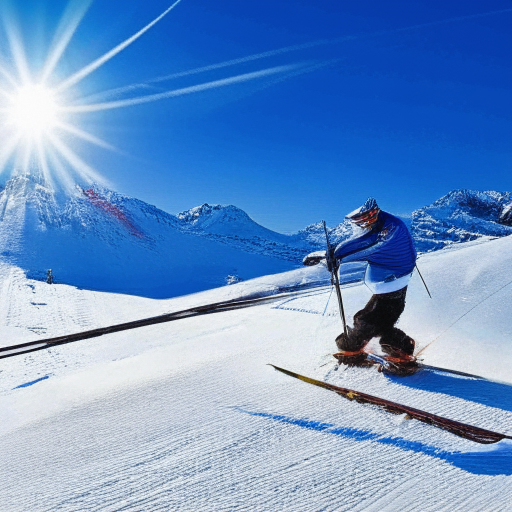Protect Your Vision: Comprehensive Insights on Snow Blindness and Effective Prevention Techniques
As the magical winter months envelop our surroundings in a beautiful blanket of snow, it becomes increasingly important to be aware of the risks associated with outdoor excursions in these frosty environments. One of the most pressing dangers is snow blindness, a temporary yet excruciating condition that arises from prolonged exposure to ultraviolet (UV) rays reflected off snow. This detailed blog post explores the intricate science of snow blindness, investigates the effects of sunlight reflecting off snow, and offers practical strategies for prevention, accurate diagnosis, and appropriate treatments. By gaining a thorough understanding of the underlying causes of this condition and implementing protective measures, we can fully embrace the wonders of winter while safeguarding our eyesight.

Understanding Snow Blindness: Medical Definitions and Underlying Causes
The medical term for snow blindness is photokeratitis, which refers to a temporary injury affecting the cornea, the eye’s outer protective layer. This painful condition primarily occurs due to excessive exposure to high doses of ultraviolet (UV) radiation, particularly from sunlight reflecting off snow-covered terrains. The intensity of sunlight is especially potent at higher altitudes, where the atmosphere is less able to filter harmful rays. Though snow blindness usually resolves on its own within a short timeframe, it is crucial to understand its triggers to establish effective prevention and management strategies that contribute to long-term eye health and well-being.
The Relationship Between Sunlight, Snow, and Eye Health
To fully comprehend the mechanics of snow blindness, it is vital to examine how sunlight interacts with the snow’s surface. Sunlight, which travels through the atmosphere, consists of various wavelengths, including harmful ultraviolet radiation. When these rays encounter a snow-covered landscape, the reflective properties of snow can bounce back as much as 80% of UV rays, significantly amplifying exposure levels. This reflection is particularly pronounced in elevated regions where the atmosphere’s capacity to filter UV radiation is diminished. As a result, the eyes can quickly become overwhelmed by excessive UV exposure, potentially damaging the cornea, conjunctiva, and other essential components of the eye that are crucial for maintaining clear vision.
Identifying Snow Blindness Symptoms for Prompt Action
The signs of snow blindness generally start to appear several hours after exposure to intense UV light. While the severity of these symptoms can differ among individuals, common indicators include:
Eye discomfort and pain: Many people report a gritty sensation, akin to having foreign objects lodged in their eyes.
Redness and swelling: The eyes may become bloodshot, and eyelids can swell and show signs of inflammation.
Watery eyes: The body’s natural response includes tearing to flush out irritants and alleviate discomfort.
Blurry vision: Tasks requiring clear vision, such as reading or driving, may become difficult due to distortion.
Sensitivity to light: An increased sensitivity to light, known as photophobia, is often accompanied by headaches.
Visual halos: Some individuals may notice bright rings or halos around light sources, leading to visual confusion.
Proactive Strategies to Shield Your Eyes from Snow Blindness
When it comes to defending your eyes against the harmful effects of UV exposure, adopting preventive measures is far more advantageous than seeking treatment after symptoms arise. Here are several actionable tips to help you minimize the risk of snow blindness:
Select appropriate eyewear: Always opt for goggles or sunglasses that provide 100% UV protection when venturing into snowy conditions. Look for eyewear featuring UV400 or complete UV protection for maximum safety.
Choose wraparound styles: Select sunglasses or goggles designed to wrap around the sides of your face, offering comprehensive protection against both direct sunlight and incidental UV exposure.
Utilize wide-brimmed hats: Wearing hats with wide brims or neck flaps can provide additional shade, effectively reducing UV exposure to your eyes.
Check the UV Index: Before participating in outdoor activities, consult the local UV Index, which indicates daily levels of UV radiation. Exercise caution and limit sun exposure during peak hours, typically between 10 AM and 4 PM.
Apply sunscreen wisely: Although it may seem unrelated, applying sunscreen around your face and eyes can significantly reduce UV exposure, thereby enhancing your overall eye protection.
Take regular indoor breaks: If you plan to spend prolonged periods in snowy areas, make it a habit to take breaks indoors, allowing your eyes to rest and recover from bright light exposure.
Effective Relief and Recovery Techniques for Snow Blindness
If you find yourself experiencing symptoms of snow blindness despite taking preventive measures, several strategies can help relieve discomfort and facilitate recovery:
Seek immediate shade: Retreat to a darkened area or indoors to shield your eyes from additional UV exposure.
Remove contact lenses: If you wear contact lenses, take them out promptly to avoid further irritation and allow your eyes to heal properly.
Apply cold compresses: Placing a cool, damp cloth over closed eyes can effectively soothe irritation and reduce swelling.
Utilize artificial tears: Over-the-counter artificial tears can provide temporary relief by keeping your eyes lubricated and alleviating dryness associated with snow blindness.
Avoid bright lights: Limit exposure to intense light sources, including screens and overhead lighting, to lessen the impact of photophobia during recovery.
Practice diligent eye rest: Engage in minimal visual strain activities, steering clear of reading or screen time, to provide your eyes with the necessary time to heal.
When to Seek Professional Medical Advice for Snow Blindness
In most cases, the symptoms of snow blindness will begin to subside within 24 to 48 hours as the cornea heals. However, it is crucial to seek medical advice if symptoms worsen or persist, as delays in treatment could lead to complications or secondary infections.
Experiencing snow blindness can significantly diminish the enjoyment of winter activities, but with informed knowledge and preventive measures, we can substantially reduce the risk while immersing ourselves in the breathtaking beauty of snowy landscapes. Remain vigilant about UV radiation levels, take regular breaks in shaded areas, and consistently prioritize wearing protective eyewear. If symptoms occur, seek relief promptly and consult a healthcare professional when necessary. By prioritizing eye safety, you can fully relish the winter wonderland and create lasting memories without compromising your vision. Embrace your winter adventures with caution!
The post Snow Blindness: Understanding Its Causes and Effects appeared first on Survival Bite.
The Article Snow Blindness Causes and Effects Explained Was Found On https://limitsofstrategy.com
The Article Snow Blindness: Understanding Its Causes and Effects First Appeared ON
: https://ad4sc.com



This is such an important topic, especially since I’m planning a snowboarding trip soon! I’ve never experienced snow blindness myself, but I’ve heard some scary stories from friends who have. It’s wild how something that seems so innocent—just enjoying the winter sun—can lead to such pain.
This post brings up a crucial aspect of winter outdoor activities that often goes overlooked until someone has suffered from it firsthand. Having experienced mild snow blindness during a skiing trip, I can attest to how debilitating the condition can be. The realization that despite the stunning landscapes, something as innocuous as sunlight reflecting off the snow can have such a significant impact is a wake-up call.
Your experience with mild snow blindness during a skiing trip really highlights how easily we can underestimate winter conditions. It’s one of those things that seems minor until it hits you like a ton of bricks. Snow, while beautiful, has its own set of challenges that can catch us off guard. The reflection of sunlight off the snow creates an almost blinding glare that can sneak up on even seasoned skiers or snowboarders.
The topic of snow blindness is incredibly relevant, especially for those of us who love winter sports or simply enjoy spending time outdoors in snowy landscapes. I remember a day on the slopes when I underestimated the sun’s glare off the white snow. Despite wearing sunglasses, I experienced a bit of discomfort that made me realize how unprepared I potentially was for the risks of UV exposure.
You raise an important point about the risks of UV exposure, especially in winter sports where the reflection off the snow can be quite intense. It’s easy to underestimate just how powerful that glare can be. I can relate to your experience; there have been times when I thought I was prepared with sunglasses, only to find myself squinting and uncomfortable halfway through the day. It highlights the need for not just protective eyewear but also a greater awareness of how our surroundings can impact our health.
It’s so true, the glare off the snow can really catch you off guard. I’ve had my share of moments when I thought my shades would be enough, but it turns out I needed something more. It’s fascinating how something as seemingly benign as sunlight can be so harsh when we’re in those bright, reflective environments.
It sounds like you had a pretty eye-opening experience out there on the slopes. The sun’s reflection off the snow can be deceptively intense, and it’s easy to overlook just how strong UV rays can be in snowy conditions, even with sunglasses on. Those moments of discomfort really highlight the importance of being aware of what we might overlook, right?